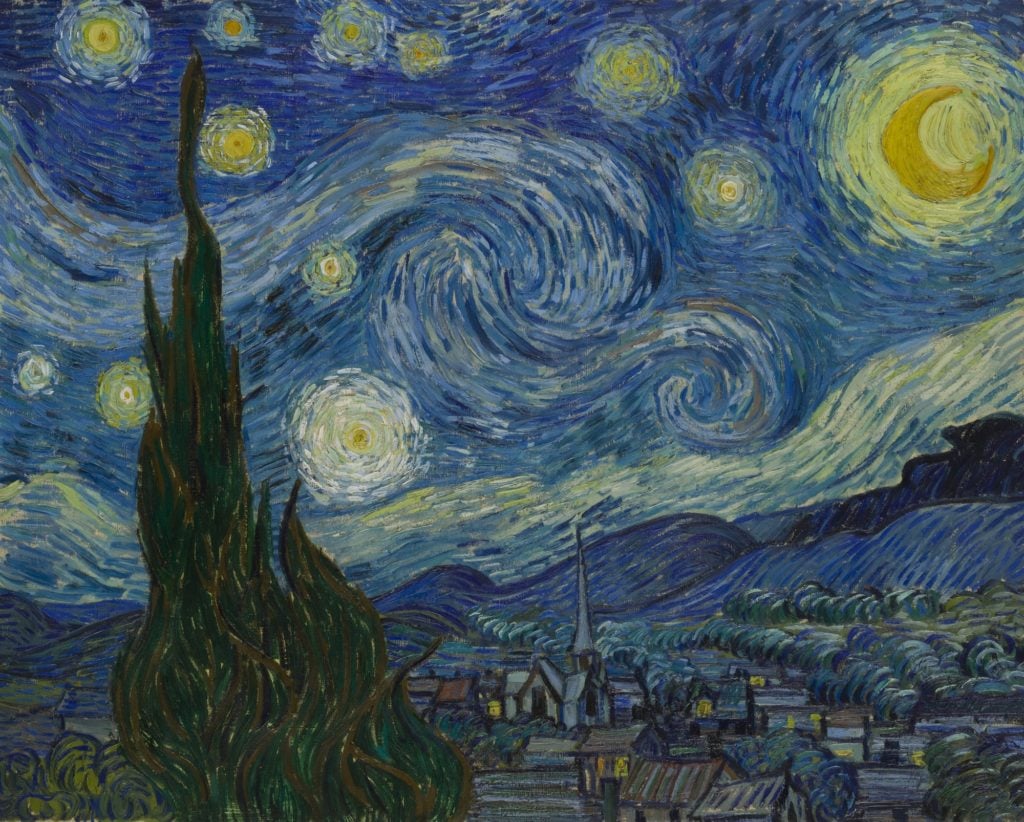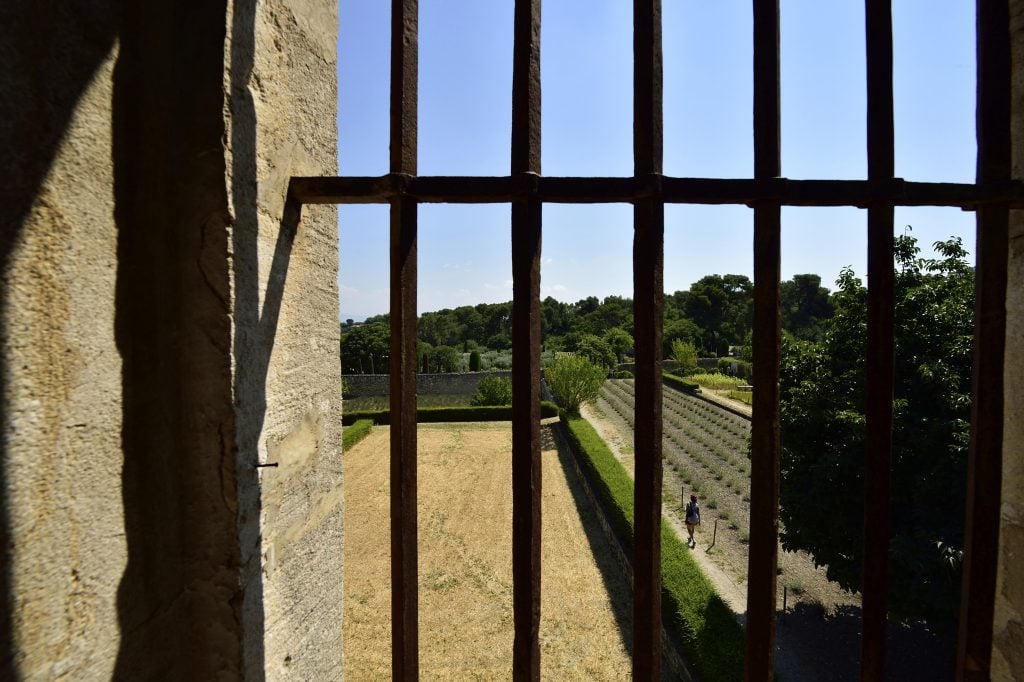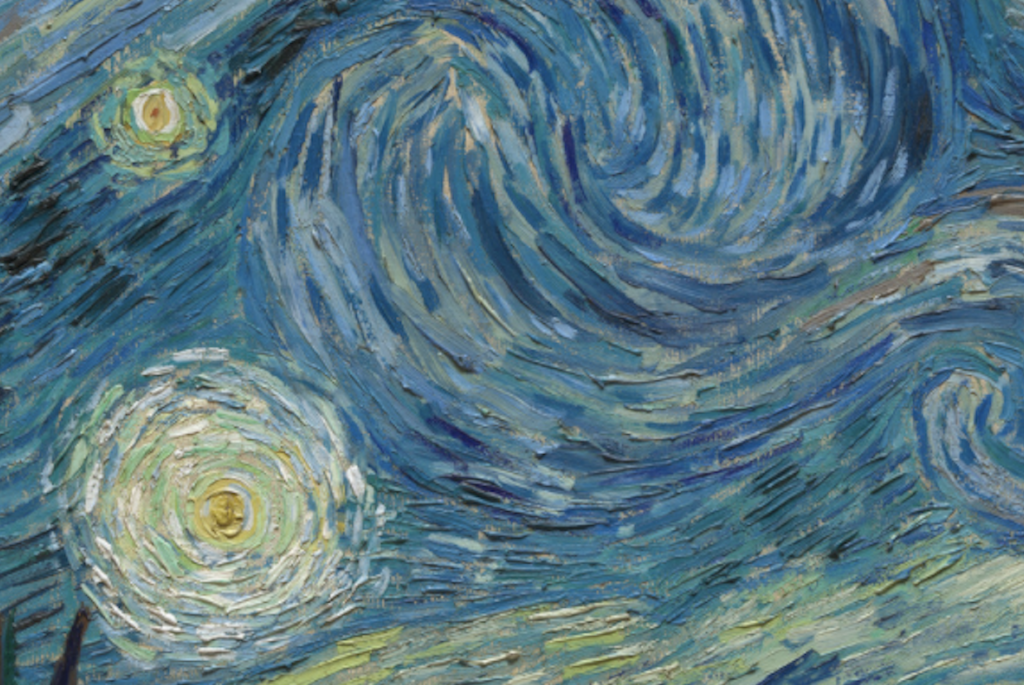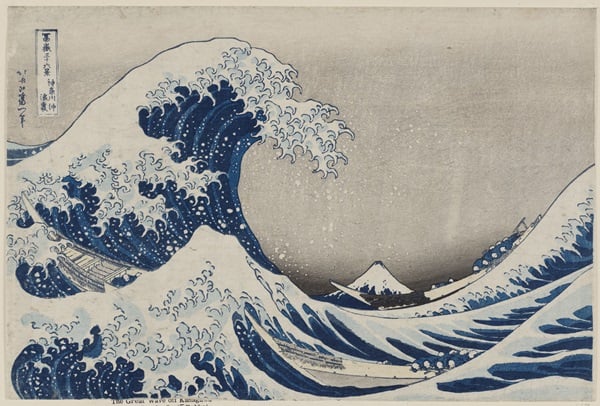Art History
Vincent van Gogh’s ‘Starry Night’ Has Captivated the Public for Over a Century—Here Are 3 Things You Might Not Know About It
The artist's magnum opus has spawned a cottage industry of sleuths and interpreters.

The artist's magnum opus has spawned a cottage industry of sleuths and interpreters.

Katie White

Vincent van Gogh’s The Starry Night (1889) is art history’s most famous celestial scene—and one of the world’s most beloved paintings to boot (the phenomenon of the immersive Van Gogh experience seems to prove people want not just to look at it, but to be inside it, too).
It’s not hard to see why. The Post-Impressionist masterpiece hums with a swirling internal energy all its own. In the foreground of the painting, a cypress tree flares up against a night sky that reverberates with dazzling shades of blue. Van Gogh conjures a sky that isn’t static and distant, but alive and moving, and the stars and moon glow with rings of luminous yellow. Below this brilliant night sky, a village sleeps quietly, seemingly wrapped in the protection of the heavens, a lone church steeple straining upwards to touch them.
Aside from its formal qualities, a lore has built up around the painting, due largely to the circumstances surrounding its creation. Van Gogh made The Starry Night at Saint-Paul-de-Mausole asylum in Saint-Rémy, in southern France, where he had voluntarily admitted himself following a manic episode in which he infamously mutilated his own ear. Many have interpreted the painting as Van Gogh’s contemplation of his own mortality—the cypress tree was a common symbol of death and mourning, and the artist often affiliated the stars with the afterlife. In one letter to his brother Theo, he wrote, “But the sight of the stars always makes me dream… Why, I say to myself, should the spots of light in the firmament be less accessible to us than the black spots on the map of France? Just as we take the train to go to Tarascon or Rouen, we take death to go to a star.”
But while the artist’s masterpiece certainly lends itself to emotive interpretations, it was also the highly considered result of one of the most productive periods of his career. The Saint-Paul-de-Mausole asylum was a progressive institution in which patients were encouraged to spend time in nature, and the artist’s brother ensured his brother was given a studio and ample time to paint.
There, in the shrouded safety of the asylum, Van Gogh experienced some of his most brilliant—and peaceful—moments. He painted his famous Irises within his first several days there, and he would go on to paint The Starry Night over just a few days in June of 1889.
In spite of the painting’s ubiquity in popular culture, The Starry Night is still full of wonderful surprises that have either been overlooked or misunderstood. We’ve found three fascinating facts that just might make you see it differently.

The gardens of the monastery of Saint-Paul-de-Mausole psychiatric hospital, as seen from a cell, Saint-Remy-de-Provence, France. Photo: Albert Ceolan/De Agostini Picture Library via Getty Images.
One common misconception is that Van Gogh painted his magnum opus while looking out the window from his room in the asylum. While perhaps less romantic a vision, the artist in fact had a separate painting studio at Saint-Paul-de-Mausole where he worked during the day. This studio had no windows at all. Van Gogh did, however, make sketches from his bedroom window, and in The Starry Night, one does see the sloping hills of the Alpilles, a low mountain range, visible from his room.
All in all, however, the scene is a composite of accurate and invented attributes. Van Gogh inserted the view of the village, for instance, and taken similar liberties with the sky. Some details are historically accurate: The bright orb at the center-left of the painting has been identified by astronomers as the the planet Venus, which would have been particularly bright in the summer of 1889. Constellations including Capella, Cassiopeia, and Pegasus are also correctly positioned, with some astronomers having gone so far as to identify the celestial scene as taking place at 4 a.m. on June 19, 1889. However, just as with his depiction of the village, Van Gogh did take a bit of creative license. The moon is shown in the crescent phase, however, it would have been in the less evocative waning gibbous phase at the time he painted it.

Detail of The Starry Night (1889).
While Van Gogh is often portrayed as the quintessence of the lonely, tortured artist, he was anything but disconnected from contemporary conversations about the latest developments in the arts. His discursive letters to his friends Paul Gaugin and Émile Bernard discussed the latest color theories, including the principles of color contrasts that Van Gogh derived from his hero, the Neoclassical artist Eugène Delacroix.
In 1889, he wrote to Theo about his recent paintings, “When you see them some time […] I shall be able to give you a better idea of the things Gauguin, Bernard and I often used to talk about and occupy ourselves with than I can do in words; it is not a return to Romanticism or to religious ideas, no. But via Delacroix one can express more of Nature and the country, by means of color and an individual drawing style, than might appear.”
For Van Gogh, color was a vehicle for expressing emotion, and the brilliantly hued canvases of his late career succeed in large part to the availability of new hues of paint on the market. It is the intensity of light in those colors on the canvas that gives The Starry Night its unique glow. The contrasts between dashes of paint create an optical effect known as luminance, in which the brain experiences two simultaneous and competing sensory impulses. Simply put—one part of the brain focuses on light and motion, but sees color less distinctly. Another part of the brain, however, will perceive each of the contrasting colors. Van Gogh’s bold, light-filled brushstrokes signal both of these experiences, creating the flickering sense for which the painting is so famed.

Under the Wave off Kanagawa (Kanagawa-oki nami-ura), also known as the Great Wave, from the series “Thirty-six Views of Mount Fuji.” Collection of the Museum of Fine Arts, Boston.
Like many Impressionist and Post-Impressionist artists, Van Gogh was deeply influenced by the Japanese woodblock prints that were imported in Europe during the 19th century. While we can credit these prints—known as ukiyo-e in Japan—with more general trends, such as a flattening of planes and use of aerial perspective in Western art, in the case of The Starry Night, one sees a more direct connection. Many art historians believe Van Gogh was directly inspired by Katsushika Hokusai’s The Great Wave Off Kanagawa. Side by side, the similarities between cresting tidal waves and the swirling heavens are easy recognize. Van Gogh even wrote to Theo about the print, saying with a sense of awe, “These waves are claws, the boat is caught in them, you can feel it.” Though he did not have a print of the Great Wave with him at the asylum, historian Martin Bailey believes he may have worked from memory, calling The Starry Night “a work of imagination with all sorts of conscious and unconscious elements which must have come into Vincent’s mind when he was doing the painting.”